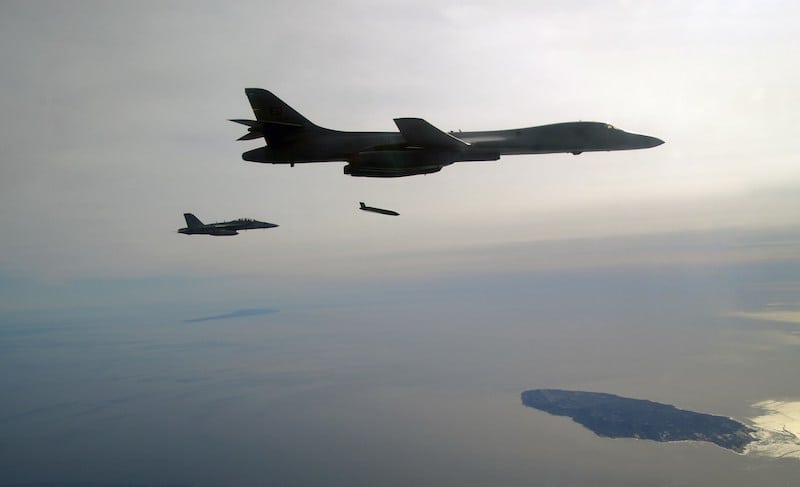
Lockheed Martin successfully fired production-configuration Long Range Anti-Ship Missiles from a U.S. Air Force B-1B bomber. Photo courtesy of the U.S. Navy
A Boeing B-1B launched long-range anti-ship missiles (LRASM) while flying over the Sea Range at Point Mugu, California. According to Lockheed Martin, the missile manufacturer, B-1B aircrew simultaneously launched two LRASMs against multiple maritime targets. This met the primary test objectives, including target impact.
“This continued success with LRASM provides confidence in its upcoming early operational capability milestone, putting a proven, unmatched munition into the U.S. Navy and U.S. Air Force inventories,” said David Helsel, LRASM program director at Lockheed Martin Missiles and Fire Control. “The successful flight demonstrates LRASM’s continued ability to strengthen sea control for our forces.”
The missile is designed to detect and destroy specific targets within groups of ships. Lockheed Martin said it does so with technologies that reduce dependence on intelligence, surveillance and reconnaissance platforms, network links and GPS navigation in electronic warfare environments. LRASM is based on the joint air-to-surface standoff missile – extended range (JASSM-ER).
Lockheed Martin said the air-launched variant provides an early operational capability for the U.S. Navy’s offensive anti-surface warfare Increment I requirement to be integrated onboard the U.S. Air Force’s B-1B in 2018 and on the U.S. Navy’s Boeing F/A-18E/F in 2019.